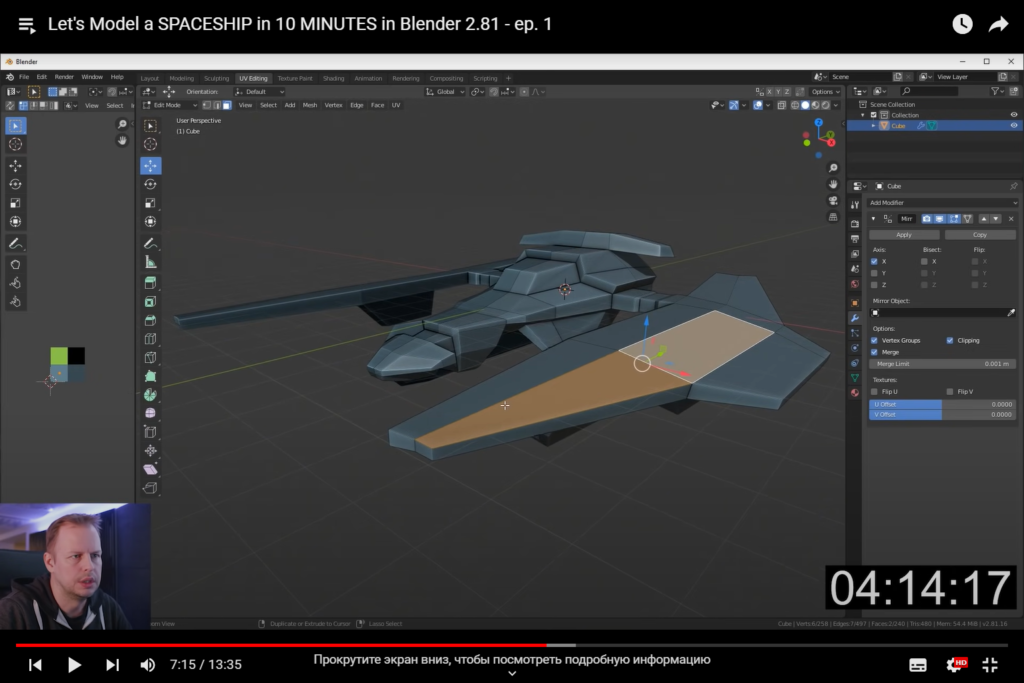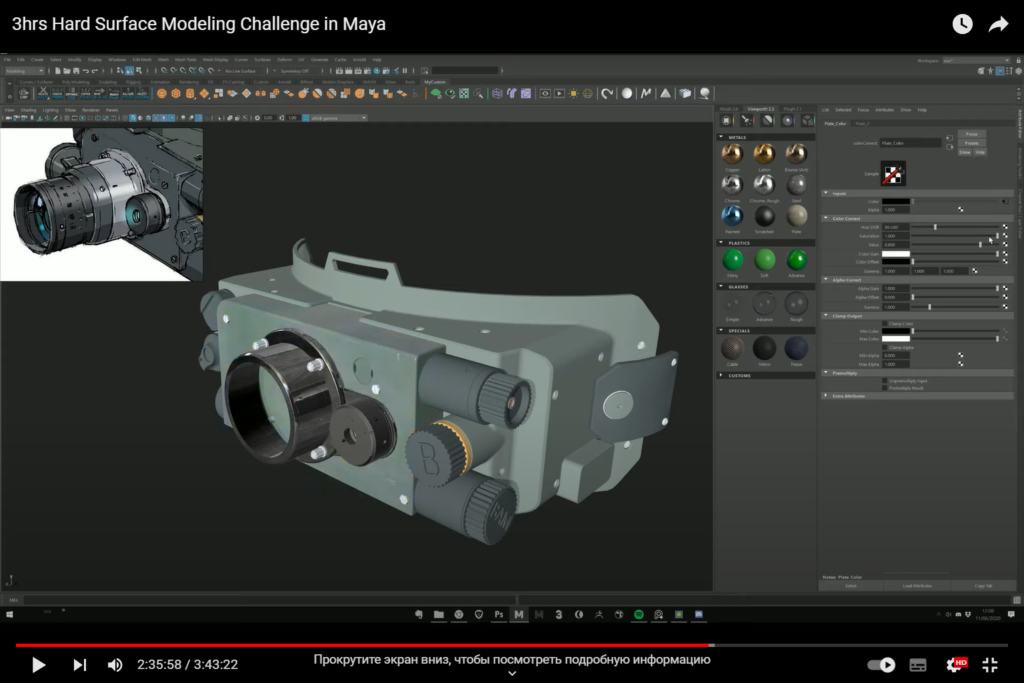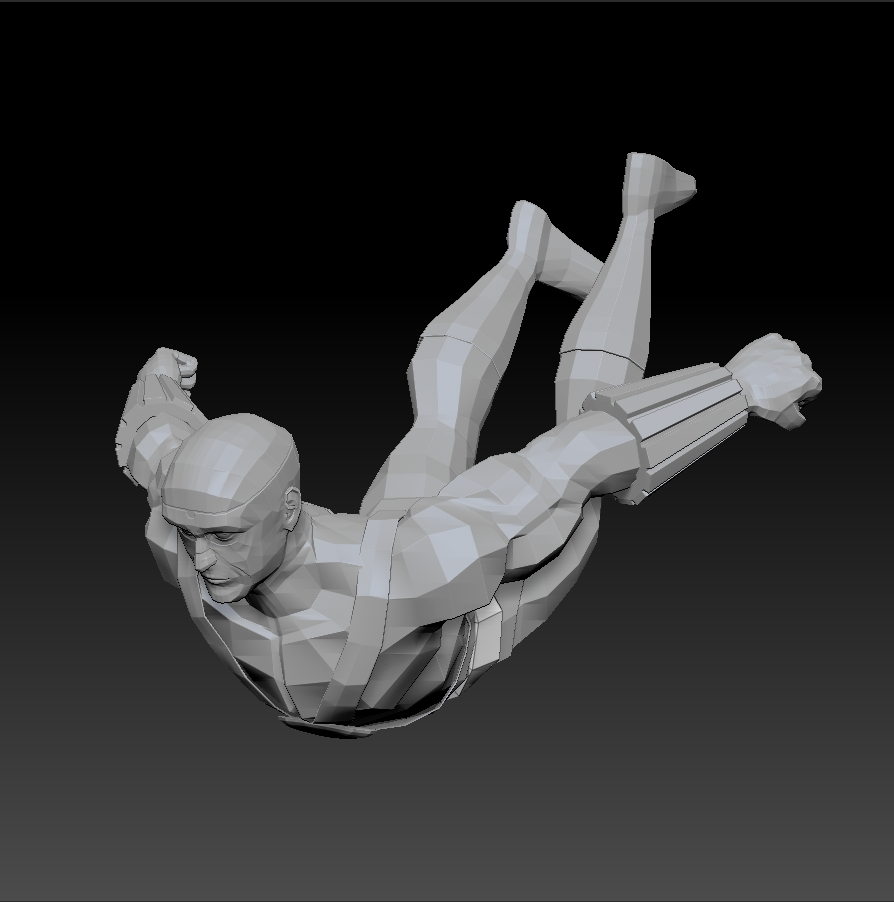In the ever-evolving world of digital art and design, 3D modeling stands tall as a pinnacle of creativity and innovation. 3D modeling has transformed industries, allowing artists, engineers, architects, and game developers to bring their imaginations to life. But with the vast potential comes the inevitable challenges.
The Complexity of Realism in 3D Models
Creating lifelike 3D models is an aspiration for many artists, but it comes with its own set of challenges. The quest for realism demands meticulous attention to detail, accurate textures, and seamless animations. Achieving photorealism is like mastering an art form, where even the slightest imperfections can disrupt the illusion.
Example: Imagine crafting a 3D model of a human face. Every facial feature, pore, and wrinkle must be intricately designed to evoke a sense of realism that captivates the audience.
Navigating the Polygon Count Conundrum
One of the perpetual challenges in 3D modeling is striking the right balance between visual fidelity and performance. The polygon count of a 3D model directly affects its smoothness and responsiveness. High polygon counts can lead to lags, especially in real-time applications such as games and simulations.
Solution: Artists often resort to techniques like retopology, where they optimize the model’s topology without compromising on its appearance.
Rigging and Animation Complexity
Bringing 3D characters to life involves the art of rigging and animation. Rigging refers to the process of adding a skeleton and controls to the model, enabling it to move and emote realistically. However, rigging complex characters can be a time-consuming and intricate task.
Example: Imagine creating a dragon character with wings, tail, and multiple joints. Rigging such a creature requires a deep understanding of its anatomy and movement.
Striving for Seamless Texturing
The textures applied to a 3D model play a vital role in its visual appeal. Achieving seamless and realistic textures can be challenging, especially when it involves handling UV mapping and avoiding texture stretching.
Solution: Artists can use procedural texturing techniques and tileable textures to achieve seamless results.
Dealing with Rendering Time
Rendering is the process of generating the final image or animation from a 3D model. Rendering high-quality images can be time-consuming, particularly for complex scenes with advanced lighting and effects.
Solution: Artists may utilize render farms or distributed rendering to reduce rendering times and meet tight project deadlines.
The Art of 3D Printing
In recent years, 3D printing has revolutionized prototyping and manufacturing. However, preparing 3D models for printing comes with its own share of challenges.
Example: Ensuring a model’s integrity for successful 3D printing may involve fixing non-manifold geometry, checking wall thickness, and adding support structures.
Compatibility and File Formats
The world of 3D modeling encompasses various software and file formats. Ensuring compatibility across different software platforms can be a headache for artists collaborating on projects.
Solution: Standard file formats like OBJ and FBX are commonly used for interchange between different software applications.
Pushing the Boundaries of Creativity
While challenges may seem daunting, they also spark innovation. Many 3D artists embrace the hurdles as opportunities to push the boundaries of creativity.
Example: Artists experimenting with abstract and surreal 3D art often blend reality and imagination, creating stunning masterpieces.
Handling 3D Model Optimization Techniques
Optimizing 3D models is essential for enhancing performance and reducing file sizes. Here are some effective optimization techniques:
- Level of Detail (LOD) Models: Implementing LOD models allows 3D artists to provide different levels of detail for distant and close-up views, reducing rendering and processing demands;
- Texture Atlas: Creating a texture atlas combines multiple textures into a single large image, reducing the number of texture calls and optimizing rendering;
- Occlusion Culling: Utilizing occlusion culling techniques helps eliminate rendering objects that are not visible to the camera, improving overall performance.
Mesh Decimation: Mesh decimation involves reducing the polygon count of a 3D model while preserving its shape, enhancing performance without compromising visual quality.
Overcoming 3D Model Compatibility Issues
When working with 3D models across different software, compatibility issues may arise. Here’s how to tackle them:
- Standard File Formats: Utilize widely accepted file formats like OBJ, FBX, and STL to ensure seamless interchangeability between various 3D modeling applications;
- Conversion Tools: Use conversion tools to transform files between different formats, ensuring smooth collaboration among artists using diverse software;
- Geometry Simplification: Simplify complex models before importing them into other software to reduce potential compatibility conflicts.
The Artistry of 3D Animation
3D animation breathes life into static models. Here are essential factors for creating captivating 3D animations:
- Keyframes and Timing: Mastering keyframes and timing is crucial to ensure smooth and natural animations that convey emotions and movements realistically;
- Easing and Interpolation: Applying easing and interpolation techniques smooths transitions between keyframes, creating fluid and visually appealing animations;
- Physics Simulation: Using physics simulation enhances the realism of animations by adding dynamic movements such as cloth simulation, rigid body dynamics, and particle systems.
Exploring Advanced 3D Rendering Techniques
To achieve stunning visual results, 3D artists often employ advanced rendering techniques:
- Ray Tracing: Ray tracing produces photorealistic images by simulating the path of light rays as they interact with surfaces and materials;
- Global Illumination: Global illumination techniques simulate indirect lighting, adding depth and realism to scenes by considering light bounces;
- Ambient Occlusion: Ambient occlusion enhances shadows in crevices and corners, accentuating object details and creating depth perception.
Comparison of 3D Modeling Software
| Software | Price | Features | Platform |
|---|---|---|---|
| Blender | Free | Powerful modeling, animation, and rendering capabilities | Windows, macOS, Linux |
| Autodesk Maya | Paid | Industry-standard animation and rendering tools | Windows, macOS, Linux |
| 3ds Max | Paid | Extensive modeling and rendering features | Windows |
| ZBrush | Paid | Specializes in sculpting and character modeling | Windows, macOS |
Tackling 3D Modeling Software Limitations
Despite the impressive capabilities of 3D modeling software, certain limitations may arise. Here’s how to address them effectively:
- Memory Constraints: Large and complex models can consume significant memory, leading to software slowdowns or crashes. To combat this, optimize textures, use proxy objects, and take advantage of software features that handle memory efficiently;
- Hardware Requirements: Intensive 3D modeling and rendering demand powerful hardware. Investing in high-performance CPUs, GPUs, and RAM can significantly improve productivity and reduce rendering times;
- Learning Curves: Mastering 3D modeling software takes time and practice. To overcome the learning curve, attend tutorials, workshops, and online courses to build expertise in the chosen software.

Exploring the Future of 3D Modeling
As technology advances, the future of 3D modeling promises exciting innovations and possibilities:
- Real-time Ray Tracing: Advancements in hardware and software enable real-time ray tracing, allowing artists to visualize photorealistic scenes and make instant adjustments;
- AI-Driven Modeling: Artificial intelligence can streamline the modeling process by automating repetitive tasks, generating base meshes, and assisting with creative decisions;
- Virtual Reality (VR) Sculpting: VR sculpting tools offer an immersive and intuitive way to shape 3D models, providing artists with an unparalleled level of control and creativity.
The Impact of 3D Modeling on Industries
3D modeling has left an indelible mark on various industries, revolutionizing their processes and outcomes:
- Architecture and Design: Architects and designers leverage 3D modeling to create detailed visualizations, enabling clients to experience their projects before construction begins;
- Entertainment and Gaming: The entertainment and gaming industries rely on 3D modeling for character design, environment creation, and immersive virtual worlds;
- Engineering and Manufacturing: Engineers use 3D models for prototyping, testing, and refining products, reducing costs and accelerating the product development cycle;
- Medical and Scientific Visualization: In medicine and scientific research, 3D models aid in understanding complex anatomical structures, facilitating surgical planning and educational purposes.

Conclusion
The realm of 3D modeling is a captivating yet demanding domain. From achieving realism to optimizing performance, from mastering rigging to pushing creative boundaries, the challenges faced by 3D artists are diverse and ever-evolving. However, it is precisely these challenges that nurture a thriving community of innovative artists and propel the world of 3D modeling towards new heights of excellence.
FAQs:
Mastering 3D modeling demands practice, dedication, and continuous learning. Utilize online tutorials, participate in community forums, and experiment with different techniques to refine your skills.
No, 3D modeling finds applications in various industries, including engineering, architecture, medicine, and product design.
Popular 3D modeling software includes Blender, Autodesk Maya, 3ds Max, and ZBrush.
To optimize for VR, prioritize low-poly models, optimize textures, and implement Level of Detail (LOD) techniques to maintain performance.
Lighting is crucial in setting the mood and atmosphere of a 3D scene. Proper lighting enhances the realism and emotional impact of the final render.
